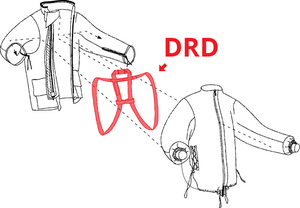Firefighter Health and Safety
Mental Health
The things we see and do can have an impact on our mental health. Sometimes the issues are obvious and sometimes they build up over time. We encourage you to reach out to a chief officer if you have anything you'd like to discuss. We are here to help and can connect you with whatever help you need. Everything is kept confidential and free of judgement. There are additional resources available, some of which are listed below.
Suicide and Crisis Hotline:
- Crisis Text Line: Text HOME to 741741
- National Suicide Prevention Lifeline: 1-800-273-8255
Critical Incident Stress Management (CISM)
CISM is a group of trained volunteers that help support first responders deal with the stress we deal with before, during, and after our responses. They offer group debriefings, one-to-one assistance, and connections for first responders with a variety of services. CISM is usually activated by a chief officer, but anyone can request assistance. To do so, contact dispatch (911) and ask them to activate the CISM team.
Support Officers
Support officers work primarily in support of the community members. But if you need someone to talk to they are available and they can connect you with resources that you need.
Code4NW
Cocde4NW is a volunteer organization supporting first responders with confidential crisis response and other resources. They are available 24/7 at 425-243-5092.
Reducing exposure risks
We know that firefighters have a high risk of exposure to certain carcinogens. To reduce this, we have rigorous decontamination procedures.
Bunker gear decontamination
If you're based out of Station 1, there's a good chance Chief Mike will wash your bunker gear!
If you're based out of Station 2, use the following steps:
- Perform a gross decon on scene using the toy hose we can hook up to a 2.5" discharge on our engines.
- Back at the station, take off your gear and hose it off on the ground with the pressure washer
- Separate your shells + liners and empty out your pockets
- Spray the shells with hose and gear cleaner (with dilution as specified over the sink at the back of the station), with special emphasis on areas that are visibly dirty
- Let it sit for 15 minutes to loosen up the gunk
- Wash your shells in the station 2 washing machine:
- Use the heavy-duty cycle
- Fill the detergent bin (pull out drawer at top left of the washer) with hose + gear cleaner to the "max fill line"
- Dry the shells
- Zip and velcro all closures before starting
- 60 minutes on medium heat
- Wash your soft goods, including liners, hood, gloves, suspenders
- Regular detergent
- Regular cycle
- Dry your liners:
- Hang and drain for 20 minutes
- Then dry for 60 min in the dryer on medium heat
- Reassemble, with special attention to your DRD strap
